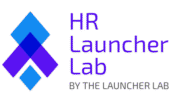
As healthcare costs continue to rise, Health Savings Accounts (HSAs) have become an essential part of a cost-effective and competitive benefits package for businesses offering High-Deductible Health Plans (HDHPs).
For employers, HSAs reduce payroll taxes, lower overall healthcare costs, and improve employee retention by offering a tax-advantaged way to save for healthcare expenses. For employees, HSAs provide a powerful tool for managing medical expenses, saving for future healthcare needs, and even planning for retirement.
This guide will help you understand how HSAs work, their benefits for both employees and employers, and how to set up and manage an HSA program successfully.
What is A Health Savings Account? #
A Health Savings Account is a tax-advantaged savings account for employees enrolled in an IRS-qualified high deductible health plan (HDHP). It offers these features to participants:
- Pre‑tax contributions: Employees contribute via payroll deductions before taxes.
- Tax-free growth: Investment gains or interest accumulate tax-free.
- Qualified withdrawals: Funds used for eligible medical expenses are tax-free.
- Portability: Employees keep their account even if they change jobs.
- Rollover: Remaining account balances carry over year to year—unlike FSAs, there is no “use-it or lose-it” policy.
HSAs provide both immediate flexibility for healthcare spending and long-term savings potential.
Unlike Flexible Spending Accounts (FSAs), HSA funds roll over each year and remain with the employee even if they leave the company. This makes HSAs an attractive long-term financial tool for employees.
Disclaimer #
The information on this site is meant for general informational purposes only and should not be considered legal advice. Employment laws and requirements differ by location and industry, so it’s essential to consult a licensed attorney to ensure your business complies with relevant regulations. No visitor should take or avoid action based solely on the content provided here. Always seek legal advice specific to your situation. While we strive to keep our information up to date, we make no guarantees about its accuracy or completeness.
This content may contain affiliate links, meaning we receive a commission if you decide to make a purchase through our links, at no cost to you.
For more details, refer to our Terms and Conditions.
